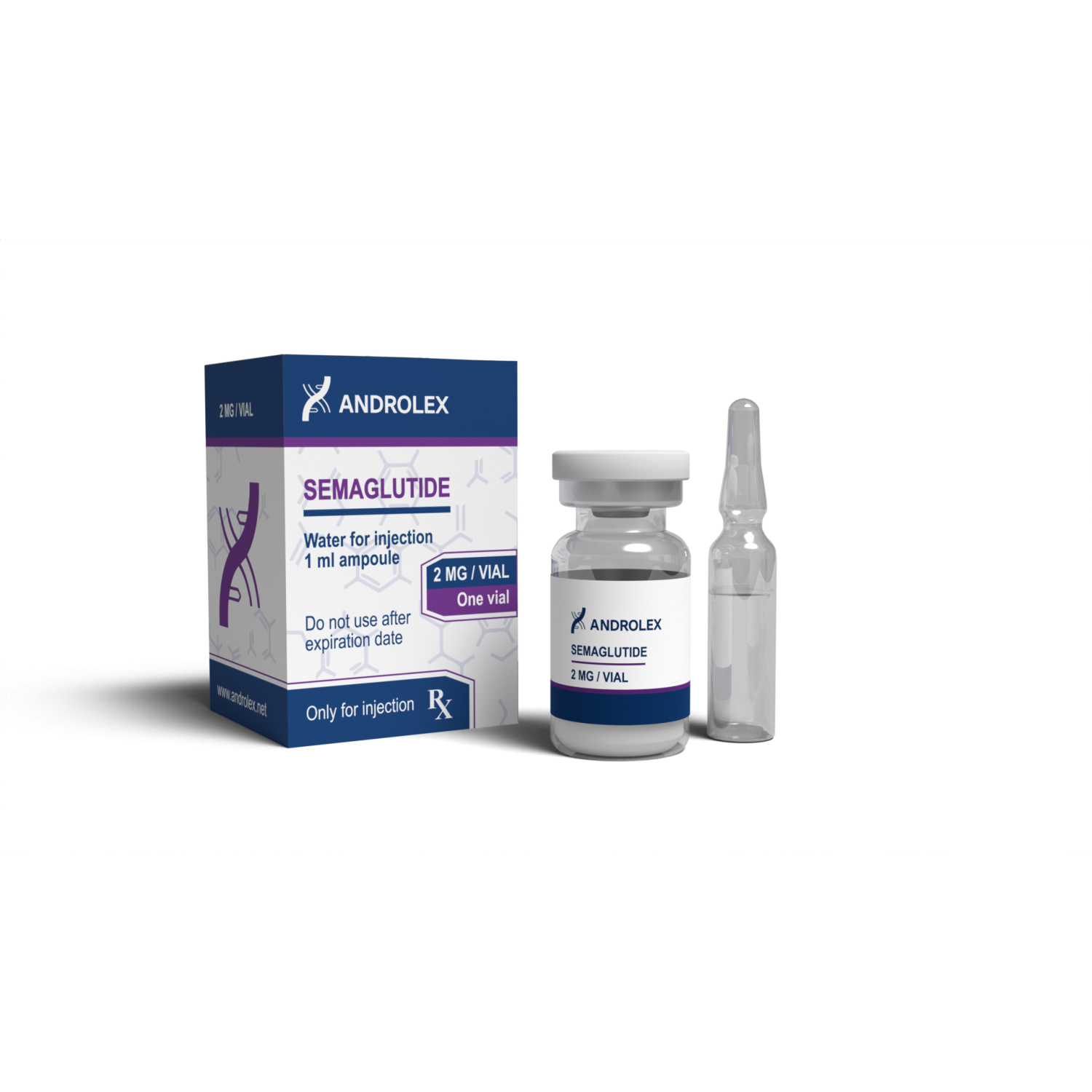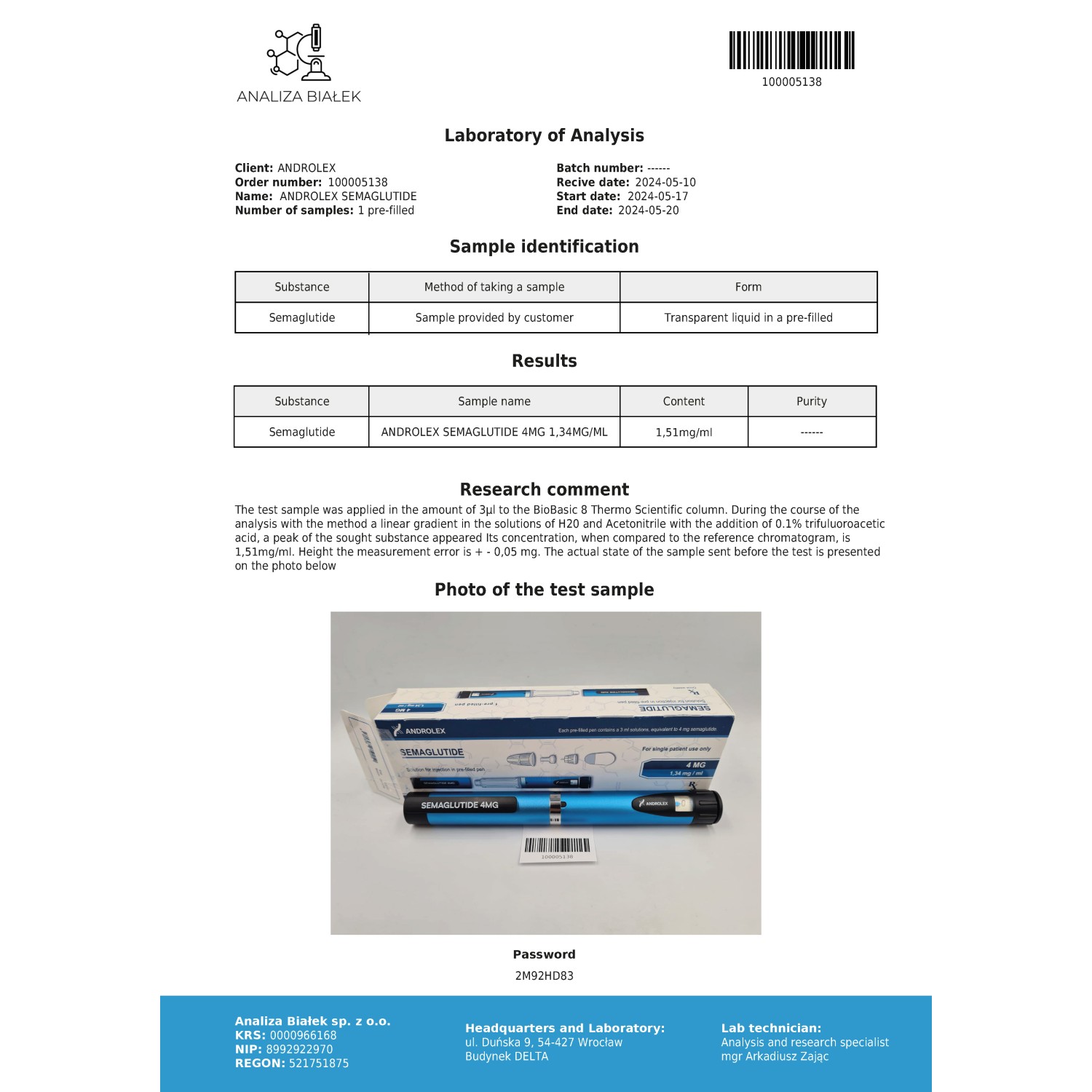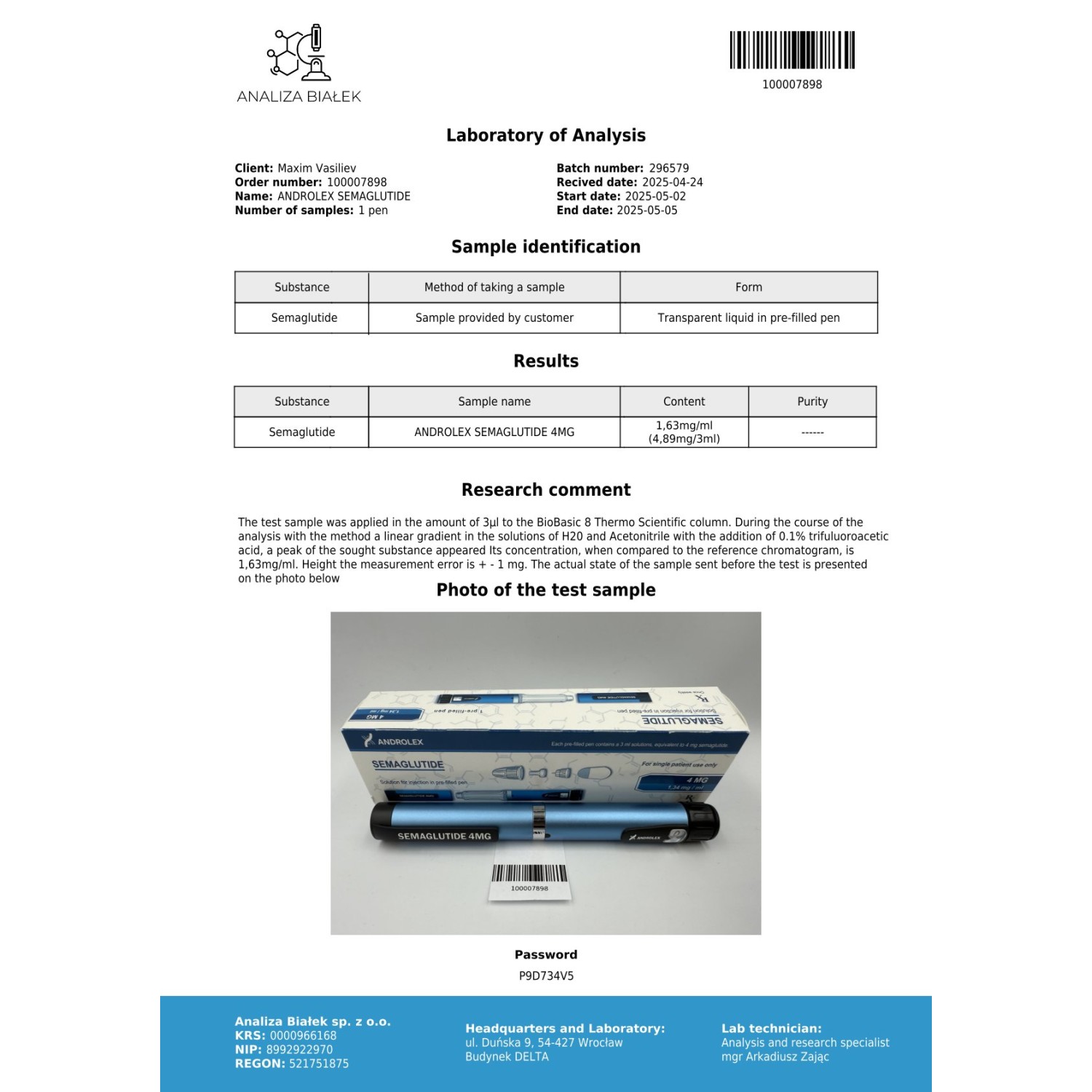





- Stock: In Stock
What is semaglutide
Semaglutide is a synthetic analogue of human glucagon-like peptide-1 (GLP-1), a hormone involved in glucose metabolism and appetite control.
It was originally developed for type 2 diabetes management but later became widely recognized for its ability to reduce body weight by regulating appetite and improving metabolic efficiency.
The compound mimics natural GLP-1 activity: it stimulates insulin secretion, inhibits glucagon release, and delays gastric emptying.
These combined effects lead to better blood glucose control, lower calorie intake, and a sustained reduction in body weight.
Main effects of semaglutide
💉 Improves blood sugar regulation in type 2 diabetes
⚖️ Promotes gradual, steady weight loss
🥗 Reduces appetite and food cravings
💪 Helps maintain lean body mass during calorie restriction
🧠 Enhances satiety and reduces emotional eating
❤️ Improves cardiometabolic markers (lipids, blood pressure)
How to take semaglutide
Administration
- Route: subcutaneous injection
- Injection sites: abdomen, thigh, or upper arm
- Frequency: once weekly, on the same day each week, with or without food
Dosage
- The 2 mg dose is typically a maintenance dose after gradual titration (starting at 0.25 mg per week and increasing every 4 weeks).
- Used in weight management and type 2 diabetes therapy as part of a long-term regimen.
If a dose is missed and less than 5 days have passed, the injection can be administered as soon as possible.
If more than 5 days have passed, skip the missed dose and resume the regular schedule.
Possible side effects
- Nausea and mild gastrointestinal discomfort (most common)
- Decreased appetite
- Fatigue or dizziness
- Constipation or diarrhea
- Rare: pancreatitis, gallbladder issues, injection site irritation
Contraindications
- Personal or family history of medullary thyroid carcinoma (MTC)
- Multiple endocrine neoplasia type 2 (MEN 2)
- Severe gastrointestinal disease or gastroparesis
- Known hypersensitivity to semaglutide or formulation components
How to store
- Unopened vials: refrigerate at 2–8 °C (36–46 °F)
- After first use: can be kept at room temperature (up to 30 °C / 86 °F) for 4–6 weeks
- Do not freeze or expose to direct sunlight
- Keep out of reach of children
How does semaglutide work
Semaglutide activates GLP-1 receptors in the pancreas, brain, and digestive tract.
This leads to:
- Increased insulin secretion when glucose levels rise
- Suppressed glucagon release, preventing unnecessary glucose output from the liver
- Slower gastric emptying, which helps stabilize post-meal blood sugar levels
- Appetite suppression through action on hypothalamic centers that regulate hunger and satiety
By replicating natural GLP-1 activity with a longer half-life (≈7 days), semaglutide maintains steady receptor activation throughout the week.
The result is better metabolic control, reduced caloric intake, and sustainable fat loss, making it one of the most effective GLP-1 analogues currently used for weight management and metabolic health optimization.


